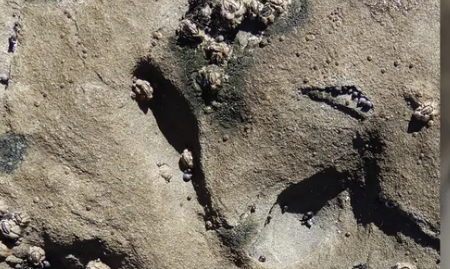
Scientists have uncovered the earliest Oldest Bird Tracks footprints ever identified in Australia, revealing the existence of early avian species in the southern polar regions of the ancient supercontinent Gondwana.
These bird tracks were unearthed by paleontologists in the Wonthaggi Formation in Victoria, Australia, dating back approximately 120 million years to the Early Cretaceous period (145 million to 100.5 million years ago). Before this discovery, evidence of Early Cretaceous birds in Australia was scarce, comprising limited skeletal remains, feathers, and two existing tracks. During that era, Australia was part of Gondwana and situated closer to the South Pole.
Oldest Bird Tracks
The significance of these bird tracks lies in their status as the oldest in Australia, indicating that birds inhabited the region at least 120 million years ago. Moreover, they represent the oldest bird tracks in the Southern Hemisphere, providing insights into the Cretaceous world on a broader scale, as explained by study co-author Anthony Martin, a paleontologist at Emory University in Atlanta, Georgia.
The tracks, numbering 27 and displaying various sizes and shapes, shed light on the presence of multiple ancient bird species, including some of the largest known from the Cretaceous period. Identified as avian due to their tridactyl nature (featuring three digits on a foot), thin digits, and sharp claws, these footprints were found on marine outcrops that were once part of an ancient polar floodplain. The researchers propose that this area may have served as a migratory route during polar summers.
The study, published in the journal PLOS ONE, suggests that the fossilized tracks offer evidence of seasonal behaviors. Birds likely walked across the surface of the beds after the spring thaw, indicating a possible migration of Early Cretaceous birds from northern regions of Gondwana to what is now Australia during Southern Hemisphere springs.
The researchers believe that these findings will encourage further exploration for evidence of Cretaceous birds in the Southern Hemisphere, contributing to a better understanding of early bird dispersal and their impact on the evolving world.




